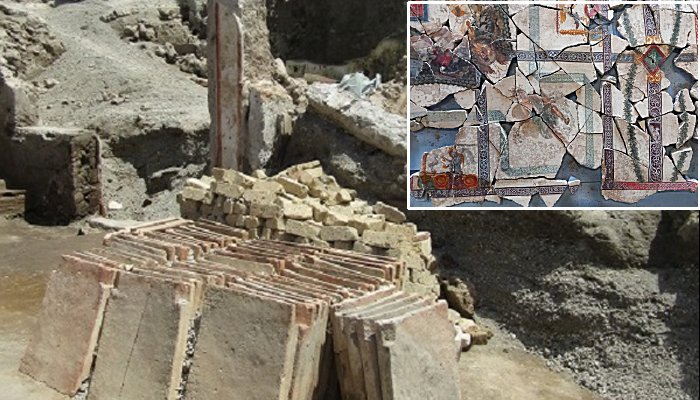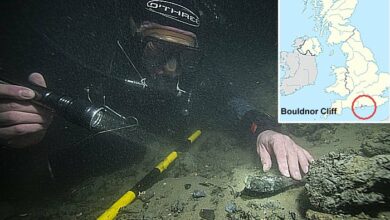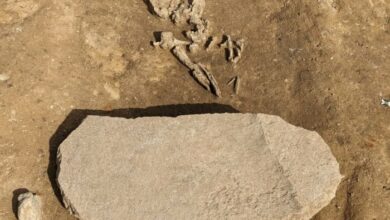Pompeii Region IX: Roman Advanced Construction Techniques In New Light

Conny Waters—AncientPages.com – The morning of August 24, 79 A.D., was disastrous for Pompeii. Mount Vesuvius erupted violently, burying the city under a lethal mix of hot ash, stones, and gases. The catastrophe left the destruction behind.
The site was a home that was being renovated. Image credit: Italy Ministry of Culture (via CNN)
Archaeological research is still ongoing in the ancient city. The continuous discoveries are regularly announced by researchers and this new information allow to gain a better understanding of daily life in this Roman city before the destruction.
Now, a team of archaeologists focus on Region IX at the Archaeological Park of Pompeii. It is one of the nine districts that the site is divided into – an area that covers approximately 3200mq. It gives new light on Roman construction techniques used once in the area.
The excavation of this area reveals the presence of an ancient building site that affected the entire insula block. The house with the bakery of Rustius Verus, where a still life depicting a focaccia and a goblet of wine has already been documented in recent months.

Excavations in Regio IX of Pompeii. IMage credit: Archaeological Park of Pompeii
The atrium was partially covered, materials for the renovation were piled up on the ground and on the doorjamb to the tablinum (reception room), decorated in the fourth Pompeian style with a mythological painting of ‘Achilles at Syrus’, one can still read what were probably the tally marks of the building site accounts, i.e. Roman numerals written in charcoal, easily erasable in contrast to the graffiti engraved in the plaster.
In one of the room there was housed the lararium (shrine), where amphorae were found that were reused to ‘slake’ the lime used in the plastering process.
In several house rooms construction tools, work charcoal, neatly arranged tiles, tuff bricks, and heaps of lime also were discovered.
A team of experts from the Massachusetts Institute of Technology, USA, supported the Archaeological Park of Pompeii in analyzing materials and construction techniques.
The hypothesis put forward by the team is the so-called “hot mixing.” It’s mixing at high temperatures, where quicklime (and not slaked lime) is pre-mixed with dry pozzolana and subsequently hydrated and applied in the construction of the opus caementicium.“
For example, during the construction of the wall, the mixture of lime, pozzolanic sand and stone was still warm due to the thermal reaction taking place and consequently dried more quickly, shortening the construction time.
In contrast, when it came to plastering the walls, it seems that the lime was first slaked and then mixed with aggregates to be laid, as is still done today.
“Pompeii is a treasure chest and not everything has been revealed in its full beauty. So much material has yet to emerge,” said the Minister of Culture, Gennaro Sangiuliano.
Park Director Gabriel Zuchtriegel wanted to emphasize that Pompeii “makes us understand so many things about the great Roman Empire, not least the use of cement. Without cement, we would have neither the Colosseum, nor the Pantheon, nor the Baths of Caracalla.
Written by Conny Waters – AncientPages.com Staff Writer





